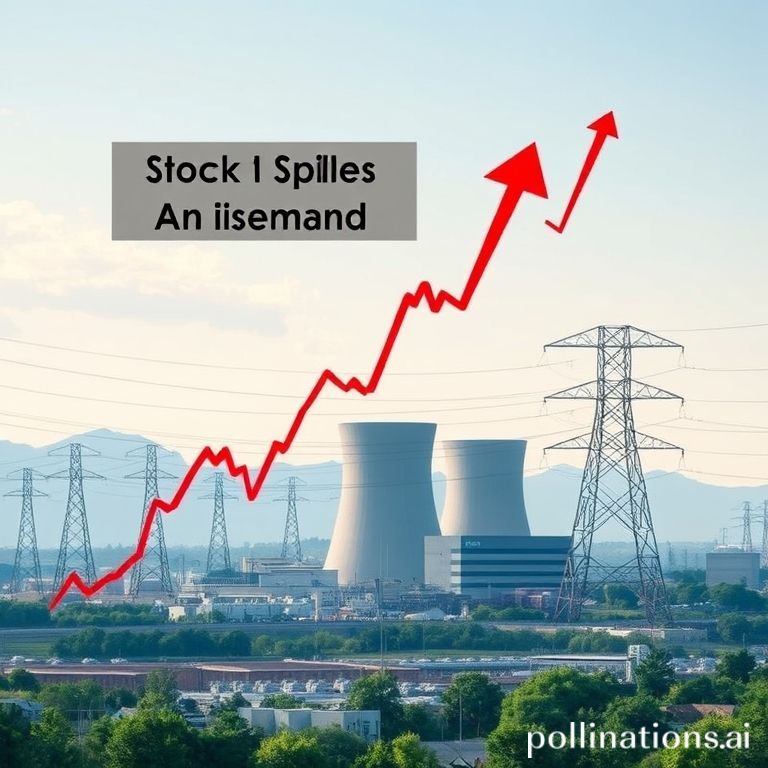Adani Power Shares: Demystifying the 74% Price Adjustment After Stock Split

Today, Adani Power Ltd, a major player in the thermal power generation sector, saw its share price significantly adjust, experiencing a 74 percent drop during the trading session. While such a sharp decline might initially raise concerns among investors, it's crucial to understand that this movement was a pre-planned and technical adjustment. The reason behind this considerable price change is the record date for the company's 1:5 stock split. This corporate action means that eligible shareholders received additional shares, which consequently led to a proportional reduction in the per-share market price.
Understanding the Mechanics of a Stock Split
A stock split is a corporate decision where a company increases the number of its outstanding shares by dividing each existing share into multiple new shares. In the case of Adani Power, one existing share with a face value of ₹10 was effectively divided into five new shares, each now holding a face value of ₹2. The company's board approved this split on August 1, and today served as the record date to determine which shareholders were eligible to receive the split shares. This process fundamentally lowers the market price per share, making the stock potentially more affordable and increasing its trading liquidity, without altering the company's overall market capitalization or the total value of an investor's holding. Therefore, the reported 74 percent decrease in share price is a direct consequence of this recalibration. Following this adjustment, Adani Power Ltd shares were observed trading at approximately Rs 167.15 per share, showing an increase of around 19 percent when compared to the previous day's closing price of Rs 141.80 apiece (this previous price is often adjusted by exchanges to reflect the split for comparison).
Brokerage Confidence and Future Outlook
Despite the dramatic short-term price adjustment due to the stock split, the long-term prospects for Adani Power appear strong, a sentiment echoed by leading financial analysts. Morgan Stanley, a prominent global brokerage, recently issued an 'overweight' rating on Adani Power stock, setting an ambitious target price of Rs 818 per share. This target suggests a potential upside of 29 percent from the pre-split adjusted closing price. Morgan Stanley's positive assessment is rooted in Adani Power's successful corporate turnaround, which has involved resolving key regulatory hurdles and completing several acquisitions that are expected to add significant value to the company. The brokerage anticipates robust earnings growth, supported by the timely completion of ongoing projects and the securing of new power purchase agreements (PPAs).
Adani Power itself has ambitious growth targets, projecting a 2.5-fold increase in its operational capacity and a 3-fold growth in its Earnings Before Interest, Taxes, Depreciation, and Amortization (EBITDA) by the fiscal year 2033. This forward-looking strategy, bolstered by new long-term coal PPAs, is expected to improve earnings visibility and enhance investor confidence in the company's future profitability and strategic expansion within India's burgeoning power sector.
Regulatory Clarity: A Boost for Investor Sentiment
A significant factor contributing to renewed investor confidence in Adani Power, and indeed the broader Adani Group, has been the recent regulatory developments. The Securities and Exchange Board of India (SEBI) has concluded its investigations into allegations raised by Hindenburg Research, clearing the Adani Group and its top executives. The regulator found no substantial evidence of legal violations, fraud, market manipulation, or insider trading. This crucial clearance has played a pivotal role in reassuring the market and investors, potentially contributing to a more stable stock performance and enhancing the overall market credibility of the group.
Financial and Operational Highlights
While the company's strategic initiatives and long-term outlook are positive, it's also important to consider its recent financial performance. Adani Power reported a 6 percent decrease in revenue, from Rs 14,956 crore in Q1FY25 to Rs 14,109 crore in Q1FY26. During the same period, net profit declined by 16 percent, moving from Rs 3,913 crore to Rs 3,305 crore. These figures, though showing a short-term dip, should be evaluated within the context of the company's aggressive growth strategy and significant capital expenditures aimed at future expansion.
Operationally, Adani Power boasts an impressive installed capacity of 18,150 MW. This includes 10,840 MW generated through efficient organic growth and an additional 7,270 MW acquired through strategic inorganic growth. The company's portfolio features flagship power plants located across key Indian states such as Gujarat, Maharashtra, Rajasthan, and Jharkhand, which utilize advanced supercritical and ultra-supercritical technologies for power generation. Recent inorganic capacity additions total 2,900 MW, including facilities at Korba (600 MW), Mutiara (1,200 MW), Dahanu (500 MW), and Butibori (600 MW). Furthermore, the company successfully brought 4,370 MW online through rapid turnarounds of acquired plants like Udupi, Raipur, Raigarh, and Mahan. With a substantial 10,920 MW currently under various stages of development, Adani Power is clearly positioned for significant future capacity expansion, underscoring its commitment to leadership in the power sector.
Conclusion: A Strategic Maneuver, Not a Genuine Crash
In conclusion, the 74 percent fall in Adani Power shares today was a direct and expected consequence of its 1:5 stock split. This technical adjustment is a strategic corporate action aimed at increasing share accessibility and liquidity, rather than a genuine "crash" indicative of underlying financial distress. Investors should interpret this movement as a recalibration and focus on the company's robust long-term growth prospects. Backed by positive brokerage recommendations, ambitious expansion plans, and renewed investor confidence following regulatory clearances, Adani Power appears well-positioned to continue its growth trajectory in the dynamic and essential power sector.
